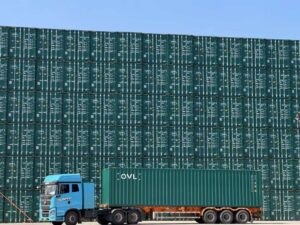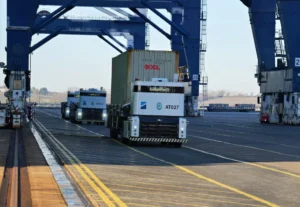Container industry revenues are contracting faster than carriers can cut costs and first-half results so far suggest sales are down by around 18%, increasing the pressure to reduce costs, according to the latest Container Insight Weekly Report from Drewry Maritime Research.
The container shipping industry is currently enduring a severe revenue contraction that is placing carriers under enormous pressure to squeeze more savings wherever they can and is driving the latest round of M&A activity.
This is evidenced from recent news that Hanjin Shipping could face bankruptcy if it does not raise finance of more than US$1 billion in a year.
H1, 2016 financial results that have been published so far from a handful of major carriers paint a very depressing picture for the industry.
H1 revenue from a number of companies was down by 18% on average, which, if it holds true for the industry across the full year, would mean that carrier income will shrink by approximately $29 billion against 2015.
That would see industry revenue fall below the level seen during the industry’s nadir of 2009.
The difference between 2009 and now is that back then the industry’s cost base was far higher, leading to a collective operating loss in the region of $19 billion.
Shipping lines are now more cost-effective, but even so the industry will probably lose at least $5 billion in 2016, according to proprietary forecasts from Drewry’s Container Forecaster.
Technical Paper: Unprecedented Challenges: Tackling the Biggest Alliances
With carriers waving goodbye to likely more than $50 billion of sales in two years since 2014 – in 2009 the sales reduction was about $66 billion in just one year – it should be no surprise that most of the big players are losing money and that some are close to the financial abyss, or that a number of lines are merging in order to better prepare for such hard times.
The latest results indicate that Q2, 2016 was harder on carriers than Drewry expected with operating margins falling to the lowest point since the first-quarter 2012 (see Figure 2).
Estimated carrier industry EBIT margins, 1Q14-2Q16. (Source: Drewry)
While they were still generally negative, results for Q1, 2016 did at least suggest that the quarter-on-quarter deterioration had been arrested, giving hope that better times might be here soon.
However, that now seems like a blip and even Drewry’s expectation for a stronger H2, 2016 is looking less firm than before with a muted rate recovery and rising fuel costs.
Carriers are starting to get some traction on spot market freight rates but not at the anticipated speed (not forgetting that longer contract terms have already been fixed at low levels) and with bunkers becoming more expensive unit costs are now in excess of unit revenues.
Having been on a strict cost-saving diet for a number of years already, some carriers might not be able to find any more fat to trim.
One obvious option is to look for M&A synergies – Hapag-Lloyd anticipates $400 million pa from the merger with UASC – but such savings are not guaranteed nor will they happen overnight.
The Drewry View: In the current declining revenue era for box carriers the pressure to find cost savings is mounting. Prolonged losses will increase the likelihood of more container M&A or more industry consolidation among carriers.









